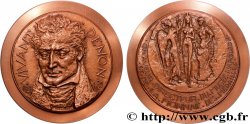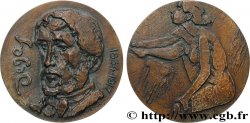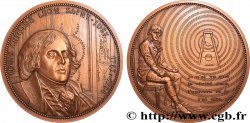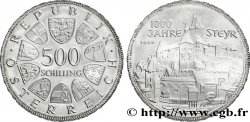Назад 1/1
E-auction 622-610450 - fme_1008023 - ARTISTES : GRAVEURS, PEINTRES, SCULPTEURS Médaille, Léonard de Vinci
Чтобы принять участие в торгах, вы должны войти в систему и стать подтвержденным участником аукциона. Войдите, чтобы сделать ставку. Ваш аккаунт будет подтвержден в течение 48 часов. Не ждите до закрытия торгов, чтобы зарегистрироваться.Сделав ставку на данный товар, вы вступаете в юридическое соглашение на покупку выбранного товара и нажатием кнопки «Сделать ставку» подтверждаете принятие вами условий интернет-аукционов cgb.fr.
Ставка может бить сделана только в полном эквиваленте евро. Торги закроются согласно времени, указанному в описании товара, все ставки, сделанные после закрытия торгов, учитываться не будут. Не следует откладывать предложение вашей ставки до последнего момента, так как система может не успеть обработать вашу заявку, и ваша ставка не будет принята. Более детальную информацию вы найдёте здесь: FAQ по интернет-аукционам.
БЕСПЛАТНО.
БЕСПЛАТНО.
| Оценить : | 70 € |
| Цена : | 22 € |
| Максимальная предлагаемая цена : | 22 € |
| Конец торгов : | 17 March 2025 20:33:40 |
| Участников : | 5 Участников |
Тип Médaille, Léonard de Vinci
Дата: 1970
Металл: bronze
Диаметр: 80,5 mm
Ориентация осей монеты: 12 h.
Гравер JOLY Raymond (1911-2006)
Вес: 242,22 g.
Век: lisse + 1970 + corne BRONZE
Пуансон: corne BRONZE
Комментарии о состоянии
Médaille nettoyée, notamment à l’avers. Traces de concrétions blanche, traces d’oxydation et de rayures
Ссылки в каталоге: :
Лицевая сторона
Аверс: легенда: MCD-LII / LEO-NARD / DE-VIN-CI/ MCM-LII.
Аверс: описание: Buste de face, signé : R.Joly.
Обратная сторона
Реверс: легенда: NE SAIS-TU PAS- QUE / NOTRE
AME - EST FAITE / D'HAR-MONIE. .
Реверс: Описание: Le personnage qui servit à Léonard
de Vinci pour exprimer le nombre d'or plus communément “Homme de Vitruve” d’après un dessin du maître vers 1490. Soit une représentation d’un homme étendant ses membres dans un cercle
parfait. La figure géométrique centrale est
extraite de son « Codex Atlanticus », traité sur
la perfection des compositions créées par la
nature ; il suffit de les étudier, pour faire progresser l'humanité.
La légende présente une citation attribué à Leonard montrant une vision ambivalente du peintre créateur de formes et d’harmonie .
Комментарий
Léonard de Vinci célèbre italien de la Renaissance est un artiste polymathe aussi bien peintre que savant, si il excelle dans la peinture avec des oeuvres comme La belle ferronnière en 1495 ou Saint jean Baptiste en 1513 tout deux conservé au Musée du Louvre (Paris) il réalise également de nombreuse études sur le corps humain notamment l’homme de vitruve.
A partir du canon parfait décrit par Vitruve dans De Architectura publié en 27 de notre ère, Léonard modifie certaine proportions pour présenter sa vision idéale du corps humain.
Si il ne sera jamais mathématicien à cause de sa formation Léonard ne cessera de s’intéresser à la symétrie et au calculs des proportions qui donneront à ses oeuvres un canon naturaliste..
Leonardo da Vinci, a famous Italian Renaissance artist, was a polymath, both a painter and a scholar. He excelled in painting, with works such as The Beautiful Ironworker in 1495 and Saint John the Baptist in 1513, both preserved at the Louvre Museum (Paris). He also produced numerous studies of the human body, notably the Vitruvian Man. From the perfect canon described by Vitruvius in De Architectura published in 27 AD, Leonardo modified certain proportions to present his ideal vision of the human body. Although he would never become a mathematician because of his training, Leonardo never ceased to be interested in symmetry and the calculation of proportions, which would give his works a naturalistic canon.
A partir du canon parfait décrit par Vitruve dans De Architectura publié en 27 de notre ère, Léonard modifie certaine proportions pour présenter sa vision idéale du corps humain.
Si il ne sera jamais mathématicien à cause de sa formation Léonard ne cessera de s’intéresser à la symétrie et au calculs des proportions qui donneront à ses oeuvres un canon naturaliste..
Leonardo da Vinci, a famous Italian Renaissance artist, was a polymath, both a painter and a scholar. He excelled in painting, with works such as The Beautiful Ironworker in 1495 and Saint John the Baptist in 1513, both preserved at the Louvre Museum (Paris). He also produced numerous studies of the human body, notably the Vitruvian Man. From the perfect canon described by Vitruvius in De Architectura published in 27 AD, Leonardo modified certain proportions to present his ideal vision of the human body. Although he would never become a mathematician because of his training, Leonardo never ceased to be interested in symmetry and the calculation of proportions, which would give his works a naturalistic canon.








 Cообщить об ошибке
Cообщить об ошибке Распечатать страницу
Распечатать страницу Отправить мой выбор
Отправить мой выбор Задать вопрос
Задать вопрос Consign / sell
Consign / sell
 Информация
Информация















